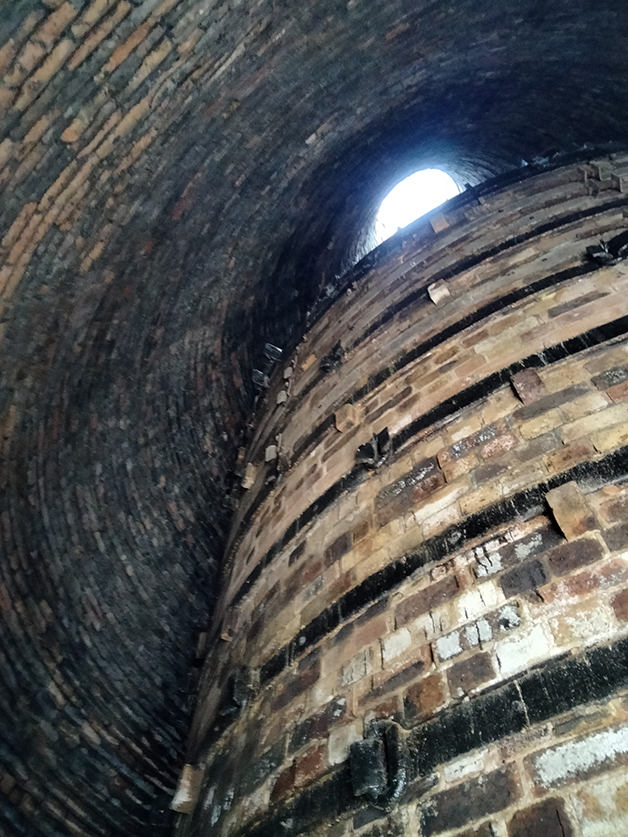We took a plane to London and a train to Stoke-on-Trent. Museums are closed on Tuesdays.
We took one stop by train to Longton to see the Gladstone kiln pipes and the Pottery Museum. It is the place where the Great Pottery Throwdown is filmed, but I personally wanted to learn from Stoke’s pottery industry. People were enormously friendly in Longton and warmly welcomed us Finns in their town.
I can only imagine the time when in the 19th and 20th century women, men and children were employed to work in the pottery factories, at variable wages. The town was clouded by ceramic kiln smoke, volatiles and smudge. Nowadays only some of the pipes are still standing, none of them still functioning.
Dozen
Until the early 1900’s the payment was negotiated by the ware that came ready from the kiln, but later it was counted as dozens as greenware. Dozen in plates was 10, but a dozen cups was 36 pieces. It was definitely considered as a full wareboard and by the time it needed to be made. The “old horse” was to ask for money for an advance and a “bull week” was saving some wareboards for Christmas.
Payment went by professional standing point. Positions were stable and when learned one almost never left the spot. Mold maker men made the most money (£1,75) and the saucer maker women (85p). Children made 50p and girls even less and they worked as attendants and mold runners. The attendants were paid by the attendees and the mold runners ran the molds to the drying stove.
The clay
The local Trent area clay fired red so it wasn’t so desirable since the fashion was the Far East white porcelain. So, the factories brought the clay all the way from Cornwall, Devon and Dorset by boats and eventually by train.
The museum showed all the different working phases of making pottery and the whole system in running a factory. Saggar making, kiln filling, making the slur to clay, jiggering, jolleying, and decorating - to mention a few.






